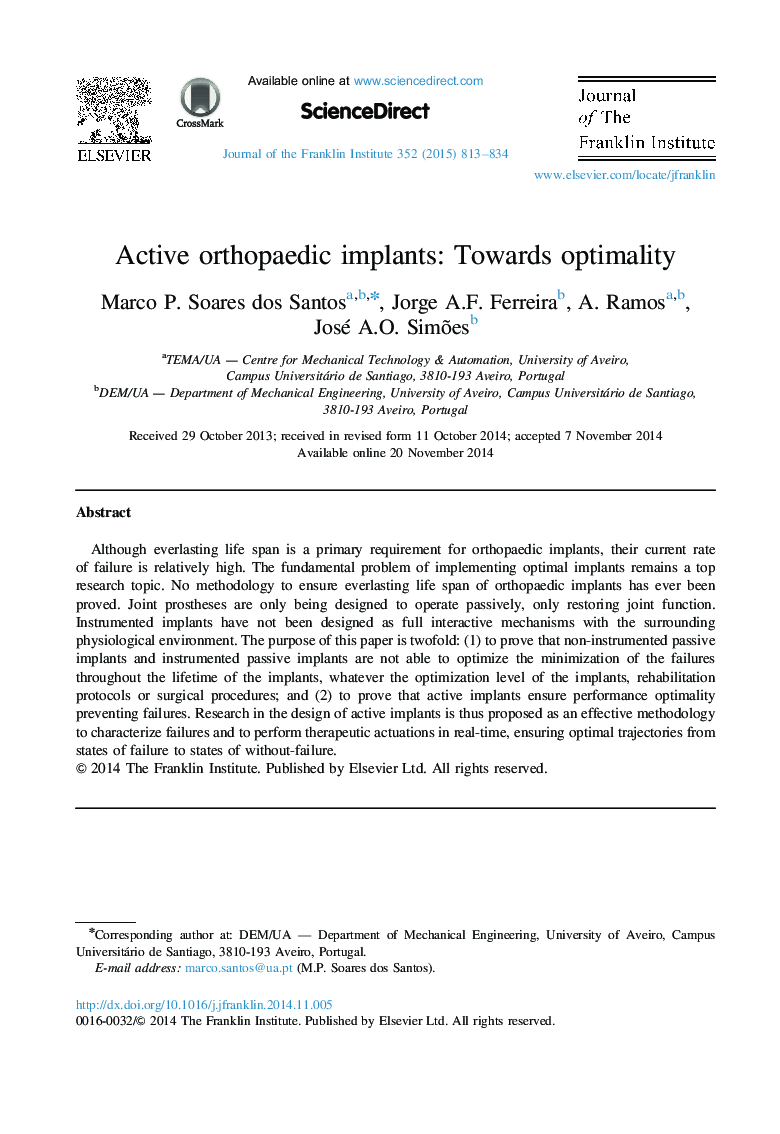| Article ID | Journal | Published Year | Pages | File Type |
|---|---|---|---|---|
| 4974558 | Journal of the Franklin Institute | 2015 | 22 Pages |
Abstract
Although everlasting life span is a primary requirement for orthopaedic implants, their current rate of failure is relatively high. The fundamental problem of implementing optimal implants remains a top research topic. No methodology to ensure everlasting life span of orthopaedic implants has ever been proved. Joint prostheses are only being designed to operate passively, only restoring joint function. Instrumented implants have not been designed as full interactive mechanisms with the surrounding physiological environment. The purpose of this paper is twofold: (1) to prove that non-instrumented passive implants and instrumented passive implants are not able to optimize the minimization of the failures throughout the lifetime of the implants, whatever the optimization level of the implants, rehabilitation protocols or surgical procedures; and (2) to prove that active implants ensure performance optimality preventing failures. Research in the design of active implants is thus proposed as an effective methodology to characterize failures and to perform therapeutic actuations in real-time, ensuring optimal trajectories from states of failure to states of without-failure.
Related Topics
Physical Sciences and Engineering
Computer Science
Signal Processing
Authors
Marco P. Soares dos Santos, Jorge A.F. Ferreira, A. Ramos, José A.O. Simões,
